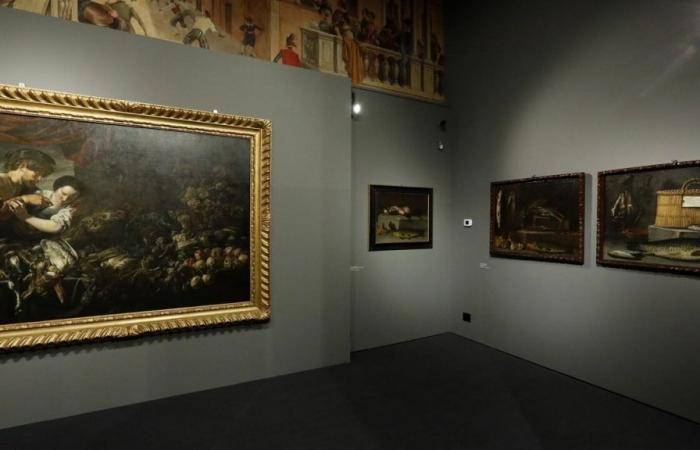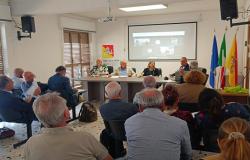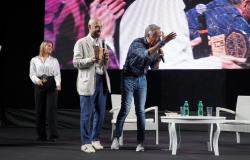An exhibition where still life becomes a vehicle for a message to society, that of the fight against food waste. A selection of documents with recipes and period menus – from the State Archives of Modena and the Rangoni Macchiavelli private archive – is placed alongside fifteen of the most significant paintings from the core of still lifes in the BPER Banca collection and another eleven from private collections and public institutions to give life to the exhibition “The Enchantment of Truth. Fragments of Daily Life in Still Life between the Seventeenth and Eighteenth Centuries”, from 5 April to 30 June in the space of La Galleria BPER Banca (in via Scudari, 9), with free admission.
A precious cross-section of the main artistic schools of the Emilia-Romagna basin between the seventeenth and eighteenth centuries “not only aesthetic and artistic, but also historical and social – explains the curator Lucia Peruzzi -. The still life represents the ‘true’ but with always diversified forms depending on the social status, the subject and the artist’s linguistic choice”.
So still life, the great protagonist, and its transformation over time: from the aristocratic tables linked to the Este court (well represented by the magnificent painting by Pier Francesco Cittadini “Table set with carpet, fruits, sweets and flowers, two children, a parrot and two dogs”) to those that tell of a simpler daily life of the less wealthy classes, made up of fish from the fresh waters of the Po Valley and vegetables, one of the most common foods for peasant life.
The paintings are embellished by a continuous appearance of flowers: “Not only a decoration to celebrate life but also bearers of a strong symbolic value, that of cut flowers which represent the transience of life itself”, Peruzzi’s comment.
Starting from these paintings and the above-mentioned archival documents – whose selection was curated by Chiara Pulini – the reflection is extended to the present day: “The aim is to stimulate critical reasoning on our relationship with food and nature, on our responsibility towards the environment and natural resources by promoting an intertemporal dialogue that, from the past, can connect to the many current challenges linked, in particular, to the fight against food waste”, explained Sabrina Bianchi, head of Cultural Heritage at BPER Banca.
A commitment that will take the form, among other things, of olfactory and sensorial educational workshops for children and young people (from kindergarten to high school) designed to raise their awareness of social issues through dialogue with art, “which always proves to be alive”, concludes curator Lucia Peruzzi.
The exhibition itinerary
The exhibition opens with a reflection on still life in ‘high’ genre painting, where inanimate objects are called to emphasize the meaning of the narrative. “The Madonna of the Rose” by Michele Desubleo (around 1650) sees the rose become a symbol of the purity of the Virgin and the passion flower recalls the instruments of the Passion, while “The Earth gives Neptune the tulip bulbs” by Giovanni Andrea Sirani (17th century) recalls the extraordinary diffusion of the tulip in Europe following its importation from Holland after its arrival from Turkey.
During the seventeenth century, the progressive increase in botanical studies and the creation of some of the most sought-after gardens in existence led flower painting to become a real fashion. Testimony to this are the paintings by Monsù Aurora which see roses, daffodils, tulips, camellias and many other garden flowers intertwined in sumptuous garlands around the portraits of two children. The beautiful painting by Cittadini della Civica Pinacoteca di Cento, depicting a table laden with sweets and refined foods of aristocratic taste in line with the orientations of the Este court, dialogues with the work of the BPER Banca Collection Still life with fruit and score by Cristoforo Munari (17th – 18th century), which reveals an extraordinary attention in the search for a refined repertoire and a precious style.
A special focus is given to the variation of the still life theme in the rendering of everyday life in its lively essentiality. The canvas by Bartolomeo Passerotti with the “Peasant playing the lute” (16th century), is placed in relation to the three paintings attributed to the Master of Rodolfo Lodi, active between the 17th and 18th centuries, which tell of a humble and solemn everyday life.
A central position in the exhibition itinerary is assigned to the “Still life with figures” by Adriaen Van Utrecht (first half of the 17th century), which has been part of BPER Banca’s corporate collection since its origins. The work, which depicts a market scene with a grandiose baroque composition of meat, fruit, vegetables and game, provides a glimpse of the economic flourishing that affected Antwerp, the artist’s hometown, in that period. The influence of Flemish art can also be perceived in the beautiful canvas of the Piacenza Bartolomeo Arbotori and in that of the Neapolitan Giovan Battista Recco, whose exhibition offers a glimpse of a cuisine rich in fish and shellfish typical of a seaside city. The two “Still Lifes” by Nicola Levoli (18th century) stand out for their skilful representation of the physicality of objects and foods. Equally significant are the tempera paintings by Giovanni Rivalta (end of the 18th century) which focus on the kitchen environment and on ‘lean’ and ‘fat’ dishes linked to respect for Lent.
The catalog
The exhibition is accompanied by a catalogue published by Sagep, which becomes an instrument of solidarity. Visitors can request it with an offer starting from €8 and the proceeds will be donated, together with the contribution of BPER BAnca, to the Dynamo Camp ETS Foundation which focuses its activities on the right to happiness of children and young people with serious pathologies.






